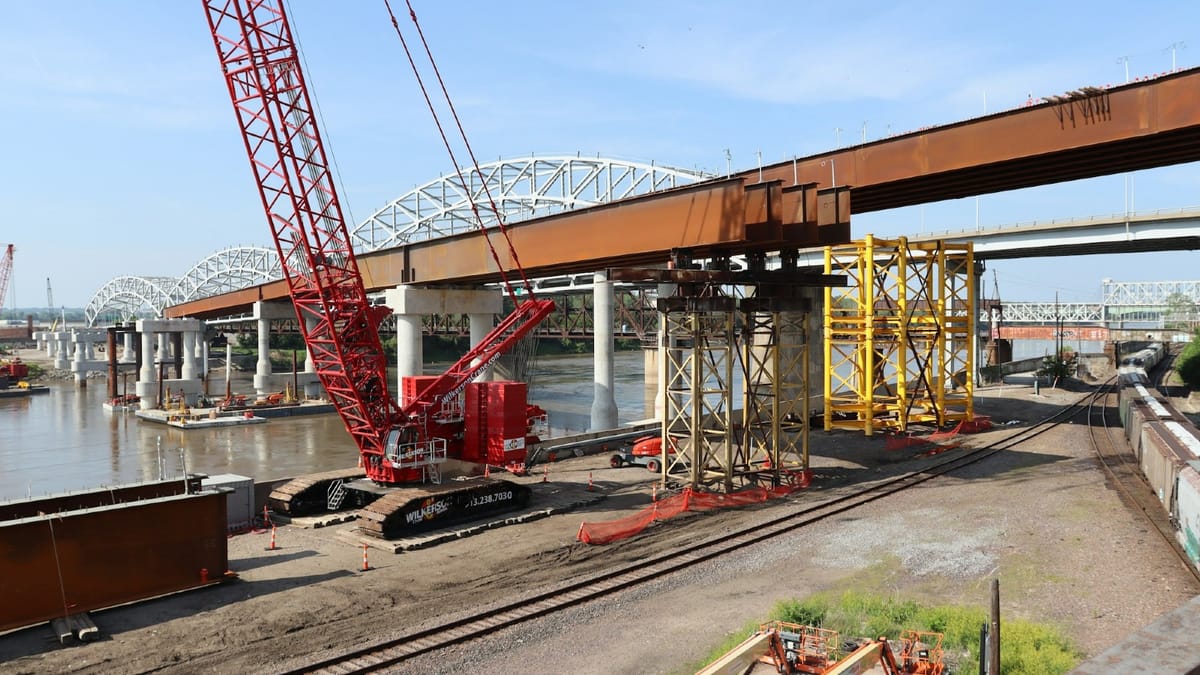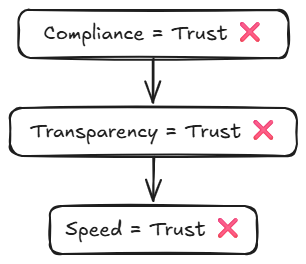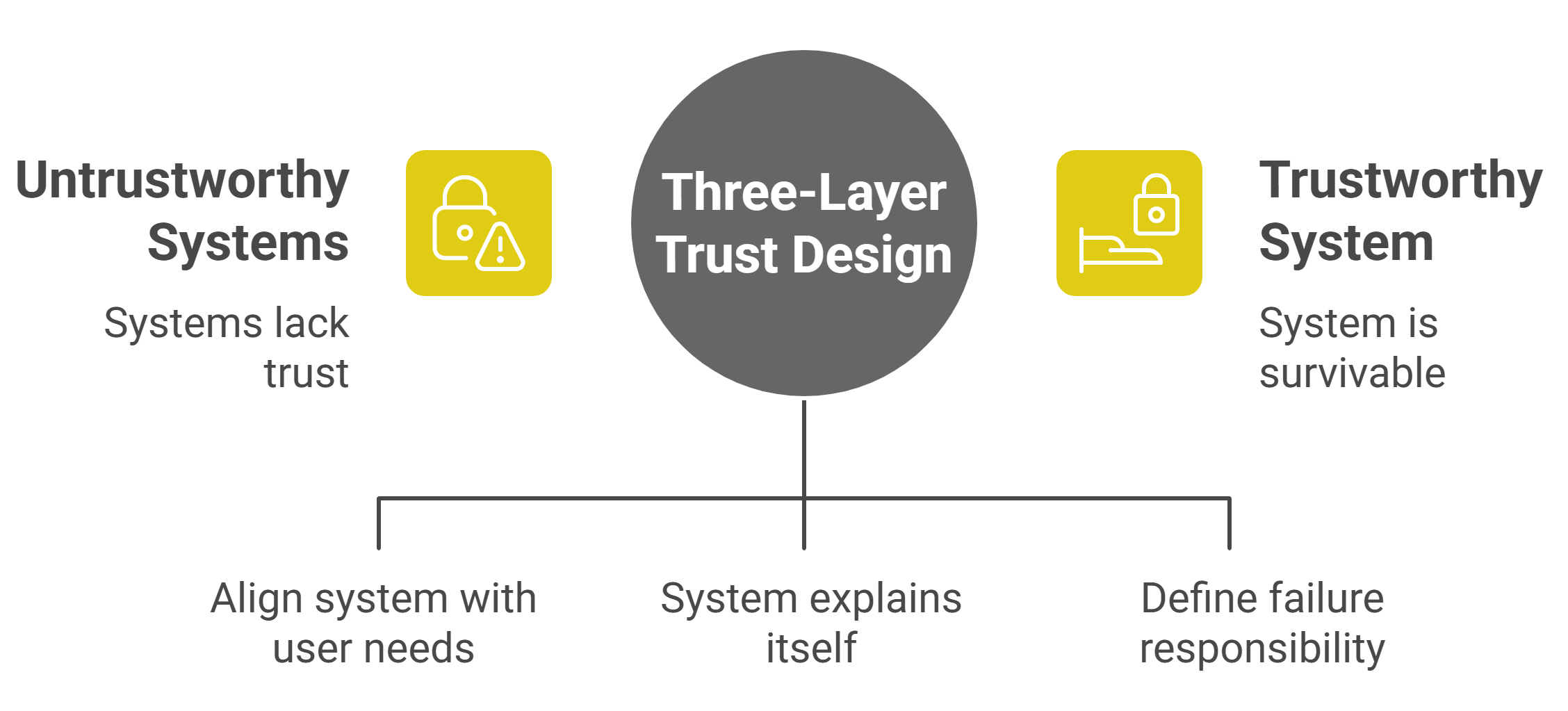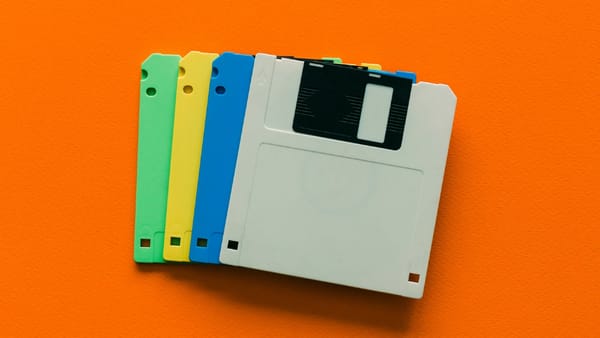How I Think About Trust in High-Stakes Systems
Trust isn’t a feature. It’s a constraint. Especially in systems where being wrong costs more than data.

What Makes a System High-Stakes?
I've seen products ship with perfect compliance, bulletproof security, and zero actual trust.
Because trust isn't paperwork. It's perception plus pressure.
The more critical the system, the more trust becomes invisible. Until it breaks.
Then everyone notices.
What Makes a System High-Stakes?
'High-stakes' means the cost of being wrong goes beyond inconvenience.
Allocating capital. Making credit decisions. Automating screening processes. Predicting outcomes that affect real lives.
When stakes are high, errors aren't just bugs. They're betrayals.
The user trusted you with something that matters. Money. Opportunity. Their future. When you get it wrong, you don't just lose a customer. You lose credibility.
And credibility, once lost, is expensive to rebuild.
Why Most Trust Models Fail
Three common mistakes I see everywhere:

Compliance equals trust. No, it doesn't. Compliance is a checklist. Trust is an outcome. You can follow every regulation and still build something nobody trusts.
Transparency equals trust. Not if nobody understands what you're being transparent about. Showing your work doesn't help if your work is incomprehensible.
Speed equals trust. Wrong again. Fast answers can actually erode confidence in complex domains. Sometimes people want you to take time. To think. To double-check.
Trust dies in the gap between what the system does and what the user believes it's doing.
That gap is where most products fail.
My Working Framework
When I design systems that need trust, I think in three layers:
Intent layer: What outcome is this system trying to achieve? Is it aligned with what the user actually wants? Not what they say they want. What they actually need to happen.
Interpretability layer: Can the system explain itself at the right level of detail? Not too much. Not too little. Just enough for the user to feel confident about the decision.
Accountability layer: What happens when it fails? Because it will fail. Every system fails eventually. Who takes responsibility? How do you make it right?

In the systems I work on, I force trust into the design from the beginning. Not as a layer on top. As a constraint that shapes everything else.
This makes building slower. More expensive. More complex.
But it makes the end result survivable.
What Makes It Hard
Trust isn't the enemy of innovation. It's the brake that makes acceleration survivable.
But it creates friction everywhere:
Speed vs. scrutiny. Users want fast answers. But they also want accurate answers. These don't always align.
Simplicity vs. fidelity. Simple systems are easier to trust. But complex problems sometimes need complex solutions.
Autonomy vs. auditability. Automated systems are efficient. But people want to understand how decisions get made.
Cultural alignment vs. universal logic. What builds trust in one context can destroy it in another.
Every choice is a trade-off. Every trade-off has consequences.
The art is in choosing which consequences you can live with.
Where This Gets Personal
I work at the intersection of AI, finance, and ethics. Three domains where trust matters more than performance.
A fast AI model that nobody trusts is useless.
A profitable financial product that erodes confidence is unsustainable.
An ethical framework that can't be implemented is just philosophy.
Trust is the constraint that makes all three domains functional.
But building trust is harder than building features. It requires discipline. Patience. The willingness to slow down when everyone else is speeding up.
It requires admitting that some problems can't be optimised for a single metric.
Where I Stand Now
I don't claim to have solved trust in AI or finance.
I just know what happens when we pretend it's already there.
Systems that work in demos but fail in reality. Products that pass every test except the one that matters: real user confidence.
Frameworks that look good on paper but collapse under pressure.
Trust isn't a feature you can add later. It's architecture. It's philosophy. It's a choice you make about what kind of system you want to build.
This blog is where I test that assumption. Publicly. Carefully. One friction at a time.
Because if we're going to build systems that matter, systems that handle money, make decisions, and shape outcomes, we need to get trust right.
Not perfect. Just right enough to survive contact with reality.
That's the experiment. Building things people can actually trust, not just use.
This space stays independent. If it sparked value, you can fuel the next one ⇢
☕ Buy me a coffee



